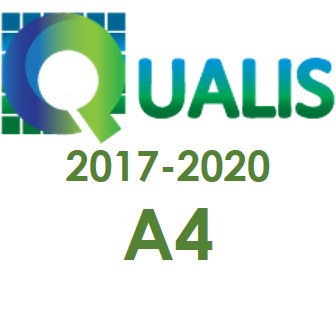A materialidade da língua em alguns aspectos da aquisição e da mudança (The materiality of language in some aspects of acquisition and change)
DOI:
https://doi.org/10.22481/el.v17i2.5333Palavras-chave:
Aquisição de linguagem; Mudança linguística; Estilo; Protótipos.Resumo
Neste artigo discute-se a aquisição e a mudança da língua como uma consequência da percepção de sua materialidade. Para isso, foram considerados os modelos da family resemblance e do perceptual magnet effect propostos por Elianor Rusch, a partir de Wittgenstein, e por Patricia Kuhl respectivamente, complementados pela hipótese do motherese como estímulo. Tais propostas foram tomadas como ponto de partida para a aquisição. A mudança, por sua vez, partiu dos modelos da Teoria Matemática da Comunicação, de Claude Shannon, tal como foi reformulado por Roman Jakobson e por Niklas Luhmann. Dados do Finlandês e do Alemão foram considerados como argumentos que justificassem a mudança do Latim para o Português como decorrência da percepção segundo os modelos propostos. Com base nesses argumentos, concluiu-se que a mudança decorreria de reações cumulativas, caracterizadas como aquisição pela formação inicial de formas prototípicas que sofreriam mudanças subsequentes conforme o sistema reaja aos estímulos externos.
PALAVRAS-CHAVE: Aquisição de linguagem; Mudança linguística; Estilo; Protótipos.
ABSTRACT
In this article we discuss language acquisition and change as a result of perception of its materiality. As theoretical background, the family resemblance and perceptual magnet effect models, proposed by Elianor Rusch, following Wittgenstein, and Patricia Kuhl, respectively, were considered and complemented by the hypothesis of motherese as a stimulus. These proposals were taken as the starting point for the acquisition. The discussion on change, in turn, was based on the models of the Mathematical Theory of Communication, by Claude Shannon and reformulated by Roman Jakobson and Niklas Luhmann. Data from Finnish and German were considered as arguments that justified the change from Latin to Portuguese as a result of the perception according to the proposed models. Based on these arguments, it was concluded that the change would arise from cumulative reactions, characterized as acquisition by the initial formation of prototypical forms, which would undergo subsequent changes as the system reacts to external stimuli.
KEYWORDS: Language acquisition; Language change; Style; Prototypical forms
Downloads
Referências
BARBOSA, P. A.; MADUREIRA, S. Manual de fonética acústica experimental. Aplicações a dados do português. São Paulo: Cortez, 2015.
BILAC, O. Poesias. Rio de Janeiro: Francisco Alves, 1942.
BYBEE, J. Phonology and Language Use. Cambridge: Cambridge University Press, 2001.
BYBEE, J. Língua, uso e cognição. Trad. Maria Angélica Furtado da Cunha. São Paulo: Cortez Editora, 2016.
CLIMENT, M. B. Fonética latina. Madrid: Gredos, 1962.
CONSONI, F.; FERREIRA NETTO, W. A tonicidade como influenciadora da variação entre consoantes surdas e sonoras na escrita de crianças no processo de alfabetização. SEMINÁRIO DO GEL, 50. São Paulo 2002.
COUTINHO, I. D. L. Pontos de gramática histórica. Rio de Janeiro: Acadêmica, 1954.
DAMKE, C. As interferências do alemão como língua materna na aprendizagem do português. 1988. (Mestrado). Língua Portuguesa, Universidade Federal do Rio Grande do Sul, Porto Alegre, 1988.
DOTY, C. S.; IDEMARU, K.; GUION, S. G. Singleton and Geminate Stops in Finnish – Acoustic Correlates. In: INTERSPEECH 2007: ANNUAL CONFERENCE OF THE INTERNATIONAL SPEECH COMMUNICATION ASSOCIATION, 8., Antwerp. Proceedings [...], p. 289, 2007.
EMPIRICUS, S. Against the logicians. Cambridge: Cambridge University Press, 2005.
FERNALD, A. 4-month-old infants prefer to listen to motherese. Infant Behavior & Development, v. 8, n. 2, p. 181-195,1985.
FERNALD, A.; KUHL, P. Acoustic determinants of infant preference for motherese speech. Infant Behavior & Development, v. 10, n. 3, p. 279-293, Jul-Sep 1987.
FERREIRA NETTO, W. Introdução à fonologia da língua portuguesa. São Paulo: Paulistana 2011.
FERREIRA NETTO, W. Tradição Oral, Narrativa e Sociedade. São Paulo: Paulistana, 2017.
FREGE, G. Sense and Reference. Transl. Max Black. The Philosophical Review, v. 57, n. 3, p. 209-230, 1948.
FREGE, G. Sobre o sentido e a referência. In: FREGE, G. (Ed.). Lógica e filosofia da linguagem. Trad. Paulo Alcoforado. São Paulo: Cultrix, 1978. p. 59-86.
HAN, M.; ET AL. Lexical Tones in Mandarin Chinese Infant-Directed Speech: Age-Related Changes in the Second Year of Life. Frontiers in Psychology, n. 9, p. 1-12, 2018.
HAYES, B. Metrical stress theory. Principles an case studies. Chicago: University of Chicago Press, 1995.
HOOPER, J. Os princípios substantivos da fonologia generativa natural. Trad. Luís Filipe Barbeiro. In: MATEUS, M. H. M. e VILLALVA, A. (ed.). Novas Perspectivas em Fonologia. Lisboa: Laboratório de Fonética da Faculdade de Letras de Lisboa, 1985.
IVERSON, P.; KUHL, P. K. Mapping the perceptual magnet effect for speech using signal-detection-theory and multidimensional-scaling. Journal of the Acoustical Society of America, v. 97, n. 1, p. 553-562, Jan 1995.
JAKOBSON, R. Linguistics and communication theory. In: JAKOBSON, R. (Ed.). Selected Writings II: words and language. The Hague: Mouton, 1971. p. 570-579.
JAKOBSON, R. Metalanguage as a linguistic problem. In: JAKOBSON, R. (Ed.). The framework of language. Michigan: University of Michigan, 1980. p.81-92.
JESSEN, M. Phonetics and Phonology of Tense and Lax Obstruents in German. Amsterdam: John Benjamins, 1998.
KUHL, P. K.; MILLER, J. D. Speech-perception in early infancy - discrimination of speech-sound categories. Journal of the Acoustical Society of America, v. 58, p. S56-S56, 1975.
KUHL, P. K. Speech-perception in early infancy - perceptual constancy for vowel categories. Journal of the Acoustical Society of America, v. 60, p. S90-S91, 1976.
KUHL, P. K. Speech-perception in early infancy - perceptual constancy for spectrally dissimilar vowel categories. Journal of the Acoustical Society of America, v. 66, n. 6, p. 1668-1679, 1979.
KUHL, P. K. A new view of language acquisition. Proceedings of the National Academy of Sciences, v. 97, n. 22, p. 1850-1857, 2000.
KUHL, P. K; ET AL.. Language/Culture/Mind/Brain. Progress at the margins between disciplines. Annals of New York Academy of Sciences,, v. 935, p. 136-174, 2001.
KIM, K. H. S.; ET AL. Distinct cortical areas associated with native and second languages. Nature, v. 388, n. 6638, p. 171-174, 1997.
LANGACKER, R. W. Foundations of cognitive grammar, volume I: theoretical prerequisites. Redwood City: Stanford University Press, 1987.
LEITE, J. F. M. Pequeno ensaio de métrica latina. Rio de Janeiro: s. ed., 1940.
LENNENBERG, E. Fundamentos biológicos del lenguaje. Madrid: Alianza Editorial, 1975.
LLORENTE, V.-J. H. La lengua latina en su aspecto prosódico. Madrid: Gredos, 1971.
LUHMANN, N. Sistemas Sociais: esboço de uma teoria geral. Petrópolis: Vozes, 2016.
MALINOWSKI, B. The problem of meaning in primitive languages. In: OGDEN, C. e RICHARDS, I. (ed.). The Meaning of Meaning. A study of the influence of language upon thought and of the science of symbolism. New York: Brase & World, 1923. p. 296-336.
MANDLER, J. M. Stories, scripts, and scenes: aspects of schema theory. Hillsdale: Laurence Erlbaum Associates, 1984.
MARTINS, R. L. Bilinguismo (Hunsrückisch-Português Brasileiro) e transferências fonético-fonológicas. In: ALVES, U. K. (Ed.). Aquisição fonético-fonológica de língua estrangeira. Investigações rio-grandenses e argentinas em discussão. Campinas: Pontes, 2016. cap. 3, p. 65-83.
MASSINI-CAGLIARI, G. Acento e ritmo. São Paulo: Contexto, 1992.
MOURA NEVES, M. H. A vertente grega da gramática tradicional. Brasília: Hucitec; Editora Universidade de Brasília, 1987.
NIEDERMANN, M. Précis de phonétique historique du latin. Paris: Klincksieck, 1953.
NOUGARET, I. Traité de métrique latine classique. Paris: Klincksieck, 1956.
PAPE, D; ET AL. Devoicing of word-inital stops: a consequence of the following vowel? In: INTERNATIONAL SEMINAR ON SPEECH PRODUCTION, 6., Sidney, 2003. PALETHORPE, S.; TABAIN, M. (ed.) Proceedings [...], 2003, Sidney: Macquarie Centre for Cognitive Science, 2003. p. 207-212.
PEIRCE, C. S. The Collected Papers of Charles Sanders Peirce reproducing Vols. I-VI ed. Charles Hartshorne and Paul Weiss (Cambridge, MA: Harvard University Press, 1931-1935), Vols. VII-VIII ed. Arthur W. Burks (same publisher, 1958).
ROSCH, E. H. On the internal structure of perceptual and semantic categories. In: MOORE, T. (ed.). Cognitive development and the acquisition of language. New York: State University of New York Academic Press, 1973. p. 111-144.
ROSCH, E. Cognitive reference points. Cogntive Psychology, v. 7, p. 532-547, 1975.
ROSCH, E.; MERVIS, C. Family resemblances: studies in the internal structure of categories. Cognitive Psychology, v. 7, p. 573-605, 1975.
ROSCH, E. Principles of Categorization. In: ROACH, E. e LLOYD, B. B. (ed.). Cognition and Categorization. Hillsdale: Lawrence Erlbaum Associates, 1978. p. 27-48.
SAUSSURE, F. D. Cours de Linguistique Générale. Édition critique préparée par Tullio de Mauro. Paris: Payot, 1974.
SHANNON, C. E. A mathematical theory of communication. Bell System Technical Journal, v. 27, n. 3, p. 379-423, 1948.
SHANNON, C. E.; WEAVER, W. A teoria matemática da comunicação. Rio de Janeiro: Difel, 1975.
SINGLETON, D.; RYAN, L. Language Acquisition: The Age Factor. 2. ed. Clevedon; Buffalo; Toronto: Multilingual Matters, 2004.
SUOMI, K; ET AL. Finnish Sound Structure. Phonetics, phonology, phonotactics and prosody. Linnanmaa: Oulu University Press, 2008.
TODOROV, T. Teorias do símbolo. São Paulo: Editora da Unesp, 2013.
TRUBETZKOY, N. S. Principios de fonologia. Madrid: Editorial Cincel, 1973.
VORSTER, J. Mommy linguist - case for motherese. Lingua, v. 37, n. 4, p. 281-312, 1975.
WITTGENSTEIN, L. Investigaciones filosóficas. 2. Edición bilíngüe alemán-español. Trad. Alfonso García Suárez; Ulises Moulines. México; Barcelona: Universidad Autónoma de México; Editorial Crítica, 1988.
Downloads
Publicado
Como Citar
Edição
Seção
Licença
Autores que publicam em Estudos da Língua(gem) concordam com os seguintes termos:
Estudos da Língua(gem) mantém os direitos autorais das contribuições publicadas e disponibiliza seu conteúdo gratuitamente por meio do portal. Autores têm permissão e são estimulados a publicar e distribuir seu trabalho online em repositórios institucionais ou na sua página pessoal, com reconhecimento de autoria e créditos de publicação inicial nesta revista, indicando endereço online.












